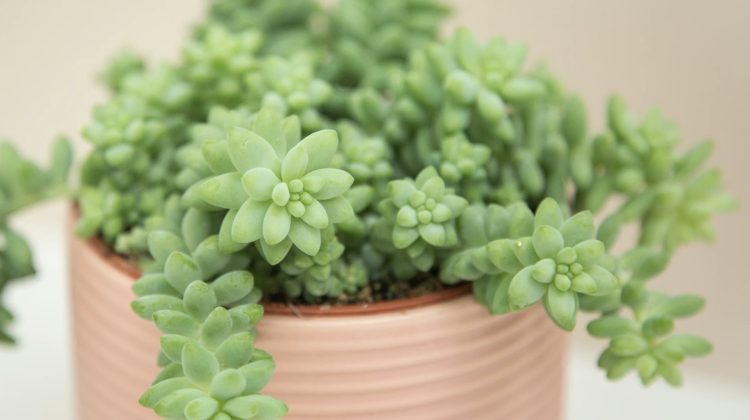
Sedum morganianum, also known as Burro’s Tail or Donkey’s Tail, is a popular succulent known for its long, trailing stems and plump, tear-drop shaped leaves.
Native to Honduras and Mexico, this easy-to-care-for plant is a great addition to any indoor garden or outdoor space.
With proper care, Sedum morganianum can thrive for years and provide a beautiful, low-maintenance addition to your home or garden.
One of the most important aspects of caring for Sedum morganianum is providing it with the right amount of light. While this plant can tolerate low-light conditions, it prefers bright, indirect light for optimal growth.
Overexposure to direct sunlight can cause the leaves to burn or drop off, so it’s important to find a balance that works for your specific environment.
In addition to proper lighting, Sedum morganianum also requires well-draining soil and infrequent watering. This plant is susceptible to root rot, so it’s important to allow the soil to dry out completely between waterings.
When watering, be sure to give the soil a thorough soaking to ensure that the roots are getting enough water. With these simple care tips, you can enjoy the beauty of Sedum morganianum for years to come.
In this article, we'll cover
1. Planting and Propagation Sedum Morganianum
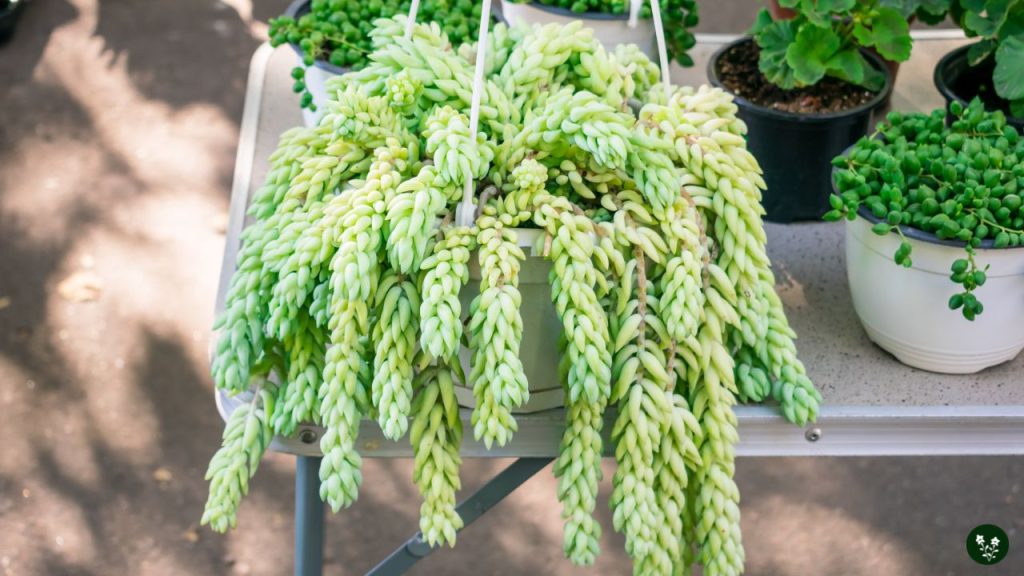
Soil and Potting Mix
Sedum Morganianum is a succulent plant that requires well-draining soil. The soil should be a mix of succulent soil and sand, with a pH range of 6.0 to 7.5.
The soil should be moist but not waterlogged, as overwatering can lead to root rot. When planting Sedum Morganianum, choose a pot with drainage holes to allow excess water to drain out.
When repotting Sedum Morganianum, use a pot that is one size larger than the current pot. Add a layer of gravel or small rocks at the bottom of the pot to improve drainage.
Fill the pot with the prepared soil mix and gently place the plant into the pot. Cover the roots with soil and press down gently to ensure the plant is secure.
Propagation Techniques
Sedum Morganianum can be propagated through stem cuttings or leaf cuttings. The best time to propagate the plant is during the spring or summer when the plant is actively growing.
To propagate through stem cuttings, cut a stem from the plant that is at least 4 inches long. Allow the cutting to dry for a few days in a cool, dry place.
Once the cutting has dried, plant it in a pot with well-draining soil. Water the cutting sparingly until roots have formed.
To propagate through leaf cuttings, remove a leaf from the plant and allow it to dry for a few days in a cool, dry place.
Once the leaf has dried, place it on top of the prepared soil mix and gently press it down. Water the soil sparingly until roots have formed.
Propagation can also be done by division, where the plant is separated into smaller sections and replanted. However, this method should only be done when the plant has outgrown its current pot and needs to be repotted.
2. Watering and Fertilizing Sedum Morganianum
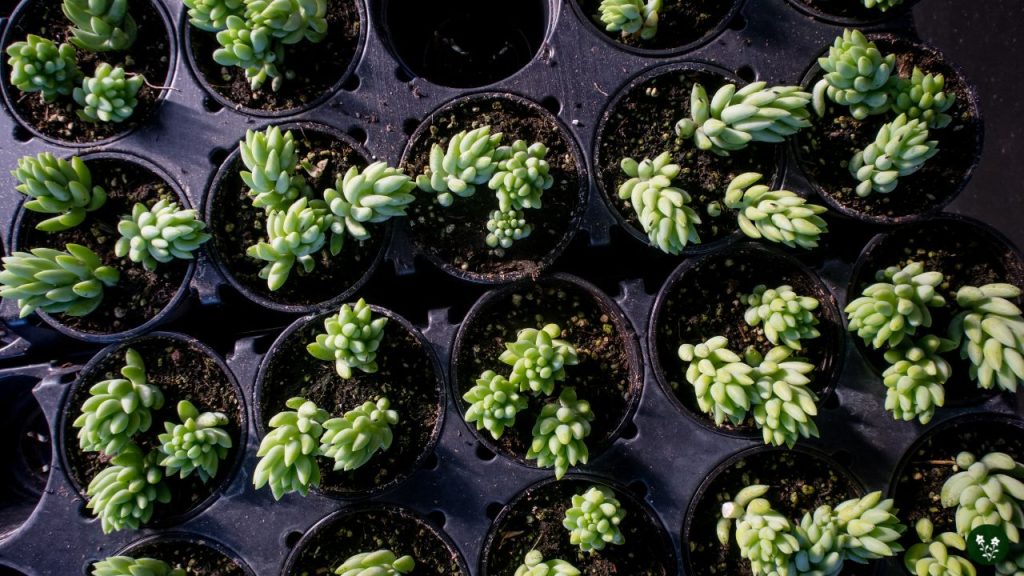
Watering Frequency and Tips
Sedum Morganianum is a succulent plant that stores water in its leaves, which means it can tolerate drought conditions. However, it is still important to water it regularly to keep it healthy.
It is recommended to water your Burro’s Tail once every 14 days, but make sure to give it a thorough drink each time, so that the accumulated salts from fertilizers can be flushed out.
When watering, make sure to use a well-draining soil mix and a pot with drainage holes to prevent water from accumulating in the soil, which can lead to root rot.
Water the soil directly and avoid getting water on the leaves, as this can cause them to rot.
During the winter months, when the plant is in its dormant phase, reduce watering to once a month to prevent overwatering.
Fertilizer Recommendations
Sedum Morganianum does not require regular fertilization, but applying a balanced fertilizer once every 2-3 months during the growing season (spring and summer) can help promote healthy growth and blooming.
When selecting a fertilizer, choose one that is specifically formulated for succulent plants and follow the instructions on the package carefully.
Over-fertilization can damage the plant and cause it to become leggy and weak.
Alternatively, you can use a slow-release fertilizer, which will provide a steady supply of nutrients over a longer period of time. This can be particularly useful for those who tend to forget to fertilize regularly.
3. Light and Temperature Requirements
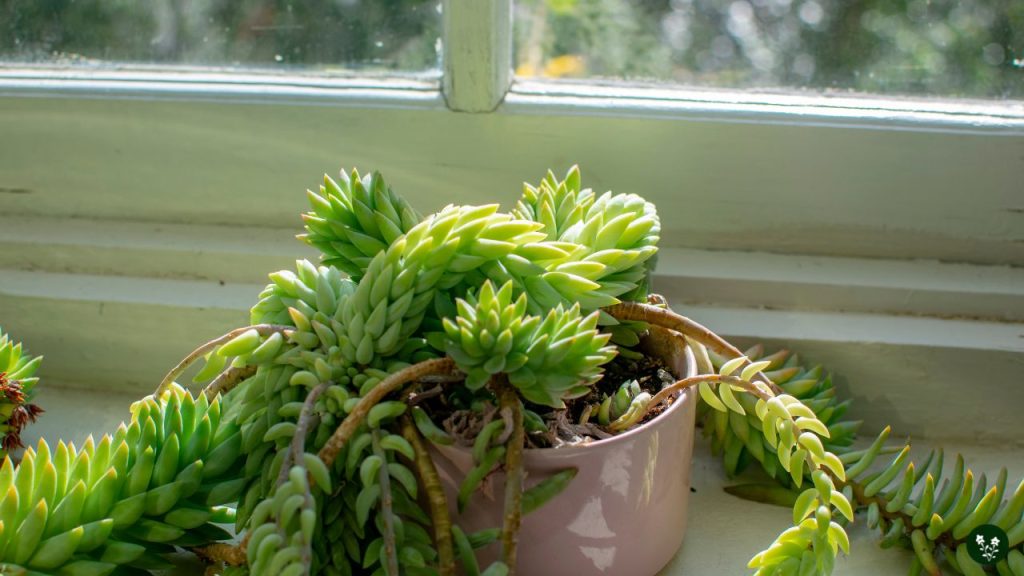
Ideal Light Conditions
Sedum Morganianum prefers bright, indirect light, but can also tolerate some direct sunlight. If the plant is exposed to too much direct sunlight, the leaves may turn yellow or brown.
In low light conditions, the plant may become leggy and lose its characteristic fullness.
It is recommended to place the plant near a south or west-facing window. If the plant is placed near an east or north-facing window, it may need to be supplemented with artificial light.
Temperature Tolerances
Sedum Morganianum is a succulent and can tolerate a wide range of temperatures. The plant prefers temperatures between 60-75°F (15-24°C) during the day and around 50-55°F (10-13°C) at night.
However, the plant can tolerate temperatures as low as 40°F (4°C) and as high as 90°F (32°C).
It is important to note that sudden temperature changes can shock the plant and cause damage. Avoid placing the plant near drafty windows or doors, air conditioning vents, or heating sources.
During the winter months, when the plant is dormant, it is recommended to keep the plant in a cooler room with temperatures around 50-55°F (10-13°C) to encourage blooming in the spring.
4. Pruning and Maintenance Sedum Morganianum
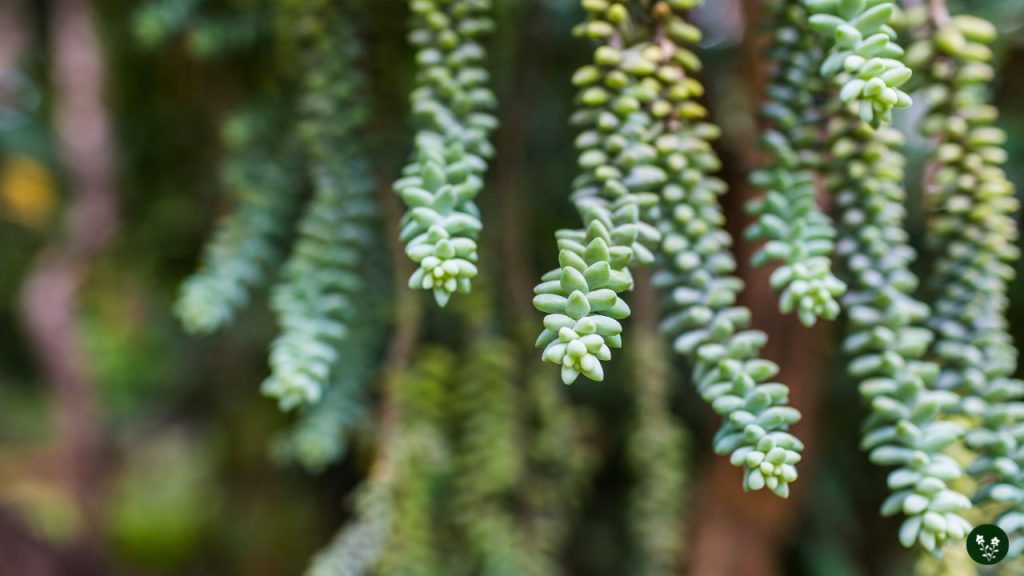
Pruning Techniques
Sedum morganianum is a relatively low-maintenance plant and doesn’t require much pruning. However, it’s important to remove any yellow, dying, or damaged leaves as soon as possible.
This will help the plant focus its energy on healthy growth and prevent the spread of disease.
If you want to shape your plant or encourage bushier growth, pruning can be done in the spring or summer. Use clean, sharp scissors or pruning shears to cut back the stems to your desired length.
Be sure to make clean cuts just above a leaf node to encourage new growth.
General Maintenance Tips
Aside from pruning, Sedum morganianum is a relatively low-maintenance plant. Here are a few tips to keep your plant healthy:
- Water sparingly: This plant is drought-tolerant and prefers to dry out between waterings. Overwatering can lead to root rot and other issues.
- Provide bright, indirect light: This plant prefers bright, indirect light but can also tolerate some direct sun.
- Fertilize sparingly: Sedum morganianum doesn’t require much fertilizer. You can feed it once a month during the growing season with a balanced, water-soluble fertilizer diluted to half strength.
- Repot as needed: This plant prefers to be slightly root-bound, but if it outgrows its pot or the soil becomes depleted, it’s time to repot. Use a well-draining potting mix and a pot with drainage holes.
| Pruning Techniques | General Maintenance Tips |
|---|---|
| Remove yellow, dying, or damaged leaves | Water sparingly |
| Cut back stems in spring or summer to shape or encourage bushier growth | Provide bright, indirect light |
| Make clean cuts just above a leaf node to encourage new growth | Fertilize sparingly with a balanced, water-soluble fertilizer diluted to half strength once a month during the growing season |
| Repot as needed in a well-draining potting mix and a pot with drainage holes |
5. Common Sedum Morganianum Problems and Solutions
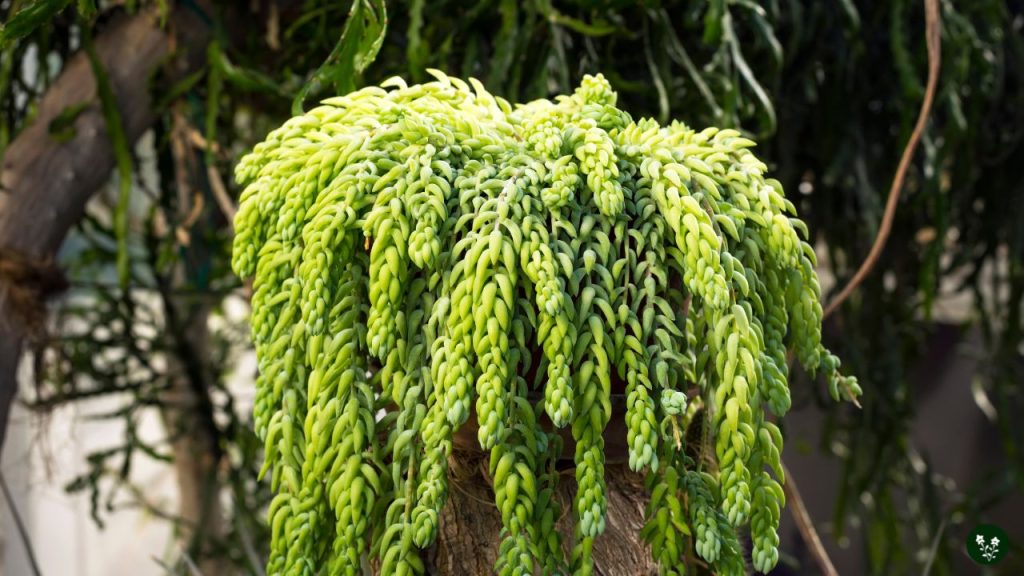
Common Pests
Sedum Morganianum is generally pest-resistant, but it can still fall prey to a few common pests. Here are some of the most common pests that can affect your plant:
| Pest | Symptoms | Solution |
|---|---|---|
| Mealybugs | White, cottony clusters on leaves and stems | Wipe down the plant with a cotton swab dipped in rubbing alcohol |
| Spider mites | Webbing on the plant, yellow or brown leaves | Spray the plant with a mixture of water and dish soap |
| Scale insects | Small, brown bumps on leaves and stems | Wipe down the plant with a cotton swab dipped in rubbing alcohol |
Disease Prevention and Treatment
While Sedum Morganianum is generally a hardy plant, it can still be vulnerable to a few diseases. Here are some tips for preventing and treating common diseases:
- Root rot: Overwatering is the most common cause of root rot. Make sure to let the soil dry out between waterings, and avoid getting water on the leaves and stems of the plant.
- Fungal diseases: Fungal diseases can be caused by overwatering or poor air circulation. Make sure the plant is in a well-ventilated area, and avoid getting water on the leaves and stems of the plant.
- Viral diseases: Viral diseases are difficult to treat and usually require removing the affected parts of the plant. Make sure to keep the plant healthy and avoid damaging the leaves and stems.
If you notice any signs of disease, such as yellow or brown leaves, mold, or unusual growth patterns, take action immediately.
Remove any affected parts of the plant and treat the remaining plant with a fungicide or insecticide as needed.
Conclusion
Sedum morganianum, commonly known as the Donkey’s Tail, is a beautiful trailing succulent that is relatively easy to care for.
With proper care, this plant can thrive and bring a touch of greenery to any indoor or outdoor space.
One of the key things to keep in mind when caring for Sedum morganianum is to avoid overwatering.
This plant is drought-tolerant and prefers to be on the dry side. It’s best to water it sparingly and allow the soil to dry out completely between waterings.
Another important aspect of Sedum morganianum care is providing it with enough light. This plant needs bright, indirect light to thrive.
If you’re growing it indoors, make sure to place it near a window that gets plenty of sunlight. Outdoors, it’s best to grow it in a spot that gets partial shade.
Finally, when it comes to fertilizing Sedum morganianum, less is more. This plant doesn’t require a lot of fertilizer and can actually be harmed by too much of it.
A balanced, water-soluble fertilizer can be applied once a month during the growing season.
Overall, Sedum morganianum is a relatively low-maintenance plant that can add a touch of beauty to any space. With proper care and attention, it can thrive and bring joy for many years to come.
Leave a Reply